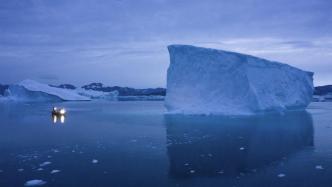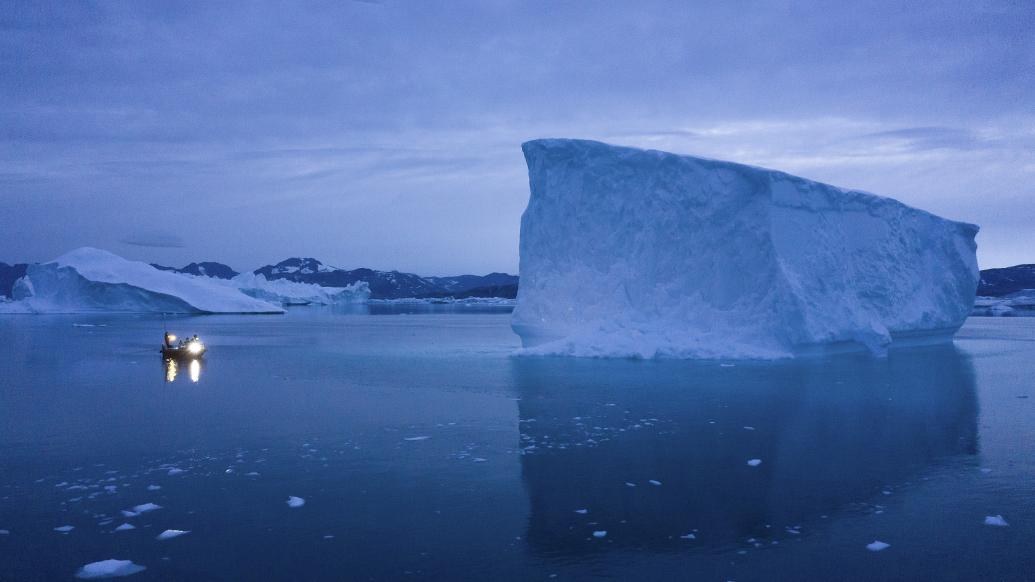

The latest climate model simulations show that the Antarctic and Greenland ice sheets are expected to raise global sea levels by about 1.4 meters by 2150 under high future emissions scenarios.
Global sea level will rise by 1.4 meters? A newly published climate model issued a new warning.
In the early hours of February 15, 2023, a paper published online in the international academic journal Nature Communications reported that the latest climate model simulations show that in the future high-emission scenario, by 2150, the Antarctic ice sheet will and the Greenland ice sheet are expected to raise global sea levels by about 1.4 meters.
This assessment incorporates the effects of thermal expansion of seawater, ice sheets and glaciers. The new model's predictions of future global sea level rise may be more accurate because it takes into account the active influence of ice sheet-climate interactions that have been ignored in most previous relevant projections.
It is an indisputable fact that a significant portion of the global population lives near coastlines, and sea levels are rising.
Over the past century, the global average sea level has risen by about 20 centimeters. Sea level rise is likely to intensify as humans contribute more to global warming.
In the plot of the movie "The Wandering Earth" 2, the sea level has risen sharply, leaving only landmark buildings such as the Oriental Pearl Tower, Jinmao Tower, and World Financial Center above the water, and the rest of the buildings are submerged.
On May 6, 2022, the 2021 "China Sea Level Bulletin" released by the Marine Early Warning and Monitoring Department of the Ministry of Natural Resources of China showed that the sea level changes in China's coastal areas are generally fluctuating and rising. In 2021, the sea level along China's coast will be 84 millimeters higher than normal, which is the highest record in more than 40 years since 1980.
The title of the above-mentioned latest published paper is "Future sea-level projections with a coupled atmosphere-ocean-ice-sheet model".
Jun-Young Park, a researcher at Pusan National University in South Korea, and Fabian Schloesser, a researcher at the University of Hawaii at Manoa and an expert in ocean/ice sheet modeling, are co-corresponding authors of the paper.
Fabian told The Paper that rising sea levels have caused many extremely harmful flood events that have had a huge impact on low-lying coastal areas. If humanity cannot avoid scenarios of high greenhouse gas emissions, leading to accelerated sea level rise, the consequences would be disastrous for low-lying coastal areas. But at the same time, the latest model simulations show that the melting of the ice sheet can still be contained if greenhouse gas emissions are sufficiently reduced.
The snow and ice effectively act as mirrors, reflecting most of the solar radiation back, Fabian said. As snow cover decreases, the oceans and atmosphere will absorb more sunlight, a process that accelerates ice sheet warming.
Park Junying told The Paper via email that a 1-meter rise in sea level will pose a threat to the lives of more than 400 million people. Accelerating sea level rise can only be prevented by rigorously implementing strategies to reduce greenhouse gas emissions, such as achieving global carbon neutrality by 2050. According to the study's projections for the future, only global temperatures below 1.8°C will not lead to irreversible changes in the ice sheet.
Simulations from the latest models show that limiting global warming to 2°C above pre-industrial levels until the end of the century may not be enough to slow global sea level rise over the next 130 years, the paper said. Only by controlling the emission of greenhouse gases more "radically" and controlling the above-mentioned temperature increase within the range of 1.5°C can the speed of sea level rise be avoided.
According to information on the official website of the United Nations, in response to climate change, 197 countries around the world adopted the "Paris Agreement" at the twenty-first session of the Conference of the Parties held in Paris on December 12, 2015, aiming to significantly reduce global greenhouse gas emissions , to limit the increase in global temperature this century to within 2°C, and at the same time seek measures to further limit the increase in temperature to within 1.5°C.
According to the relevant information on the above-mentioned website "Climate Action", the temperature of the earth is now about 1.1 ℃ higher than that in the 1800s. On current trends in carbon dioxide emissions, global temperatures could rise by as much as 4.4°C by the end of the century. And "within 1.5°C" is considered to be the upper limit for avoiding the most serious consequences of climate change.
The world will need to reduce fossil fuel production by around 6% per year between 2020 and 2030 if the emissions reduction pathway outlined by the 1.5°C temperature target is followed.
However, the current plans and forecasts of various countries increase production by an average of 2% per year, which will make their production in 2030 more than double that required by the 1.5°C temperature control target.
To limit the increase in global temperature to well below 2°C, the emissions gap in 2030, or the gap between the required CO2 reductions and current trends, is estimated at 12-15 GtCO2e.
To achieve the temperature control target of 1.5°C, the gap is 29-32 billion tons of carbon dioxide equivalent, which is roughly equivalent to the combined emissions of the six largest emitters.
Park Junying said that in the past, offline ice sheet models were used to simulate sea level rise, but the new model captures the complex interactions between the atmosphere, ocean, ice sheets, ice shelves, and icebergs, and the model predictions are more accurate than before. .
Fabian also said that the advantage of the new model is that it more realistically captures the interaction and feedback mechanism of the ocean, atmosphere and ice sheet in the coupled model, taking into account the complex interaction of ice sheet, iceberg, ocean and atmosphere. But this new model isn't perfect. They don't yet know when the tipping point will be reached for the ice sheet to stop warming and continue melting.